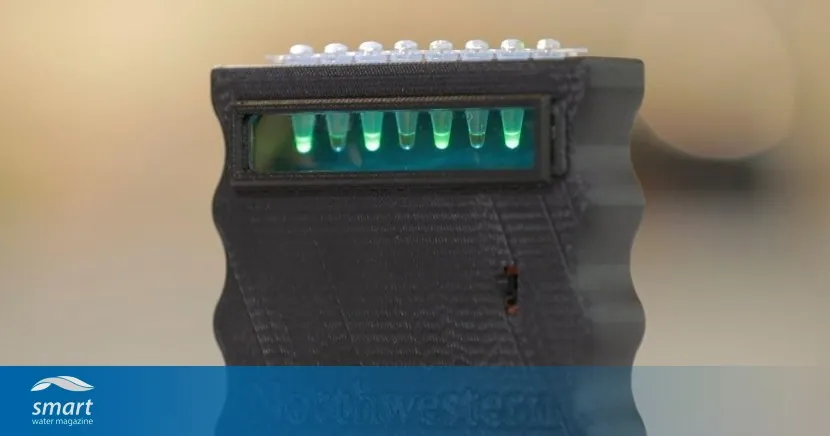
Revolutionary New Technology Enhances Water Contaminant Detection by Tenfold!
2025-01-15
Author: Daniel
Revolutionary New Technology Enhances Water Contaminant Detection by Tenfold!
In a groundbreaking advancement for environmental and human health monitoring, researchers at Northwestern University have unveiled a remarkable new sensing technology capable of detecting contaminants in drinking water with unprecedented sensitivity. This innovative system, which enhances previous biosensing platforms, can now identify harmful chemicals at concentrations ten times lower than earlier models.
Much like how connecting an electric instrument to an amplifier can improve sound quality, this new technology utilizes a fascinating biochemical trick to amplify the faint signals emitted by toxins and small molecules. These subtle signals, often overlooked due to their low concentration, can now be detected and quantified using advanced lab techniques.
The study, published in the prestigious Nature Chemical Biology, marks a major milestone in biosensor technology. Julius Lucks, a synthetic biologist and a key player in the research, emphasizes the potential of these biosensors, stating, “Biosensors repurposed from nature can, in principle, detect a whole spectrum of contaminants and human health markers, though they’re often not sensitive enough as is. By adding genetic circuitry that acts like an amplifier, we can make this platform suitable for environmental and human health applications.”
Introducing ROSALIND 3.0, the latest evolution of the sensing platform originally designed to detect 17 different contaminants in a single drop of water. This platform, which glows green when toxins exceed EPA standards, has undergone sophistication through an approach known as cell-free synthetic biology. This technique involves reprogramming the molecular components—such as DNA, RNA, and proteins—removed from living cells to perform new tasks.
The evolution of ROSALIND, much like improvements in transistor radio technology, has enhanced its functionality. Lucks likens the progress to tuning a radio: “The first transistor radio picks up a signal but has issues like lost reception when obstructed. Over time, circuitry advances have improved stability and clarity. This iteration adds a 'volume knob' to precisely enhance the faint signals we need to capture.”
In a surprising twist, researchers have turned a potential stumbling block—a troublesome enzyme called T7 RNA polymerase—into a strategic advantage. This enzyme, typically a nuisance in nucleic acid circuits, has been cleverly engineered to amplify signals in the system, effectively allowing the researchers to detect substances like antibiotics and heavy metals at astonishingly low levels.
“We created a new system to amplify signals within ROSALIND,” explains Jenni Li, a Ph.D. candidate and the study's lead author. “Thanks to an exciting development in biochemistry, we can now sensitively detect compounds without altering the biosensor protein itself, all while using nucleic acid circuits.”
The practical applications of ROSALIND are already being realized. Prior versions of this innovative platform have been implemented in field studies, such as those detecting lead in drinking water around Chicago. With the advancements introduced in the 3.0 model, Lucks foresees further applications on the horizon: “We are also developing ROSALIND to identify human health markers, food quality indicators, and agricultural compounds, significantly broadening the potential for this technology.”
The implications of this research extend far beyond clean drinking water. As researchers refine their methods, the promise of ROSALIND stands to revolutionize how we monitor environmental toxins and public health, paving the way for a safer and healthier future. Could this be the game-changing technology we’ve been waiting for? Stay tuned as this story develops!

 Brasil (PT)
Brasil (PT)
 Canada (EN)
Canada (EN)
 Chile (ES)
Chile (ES)
 Česko (CS)
Česko (CS)
 대한민국 (KO)
대한민국 (KO)
 España (ES)
España (ES)
 France (FR)
France (FR)
 Hong Kong (EN)
Hong Kong (EN)
 Italia (IT)
Italia (IT)
 日本 (JA)
日本 (JA)
 Magyarország (HU)
Magyarország (HU)
 Norge (NO)
Norge (NO)
 Polska (PL)
Polska (PL)
 Schweiz (DE)
Schweiz (DE)
 Singapore (EN)
Singapore (EN)
 Sverige (SV)
Sverige (SV)
 Suomi (FI)
Suomi (FI)
 Türkiye (TR)
Türkiye (TR)
 الإمارات العربية المتحدة (AR)
الإمارات العربية المتحدة (AR)